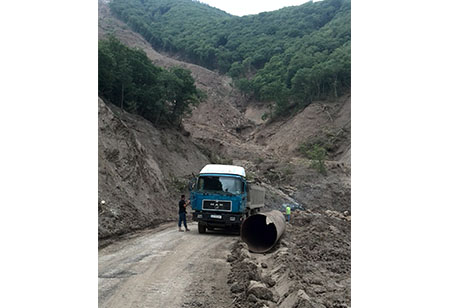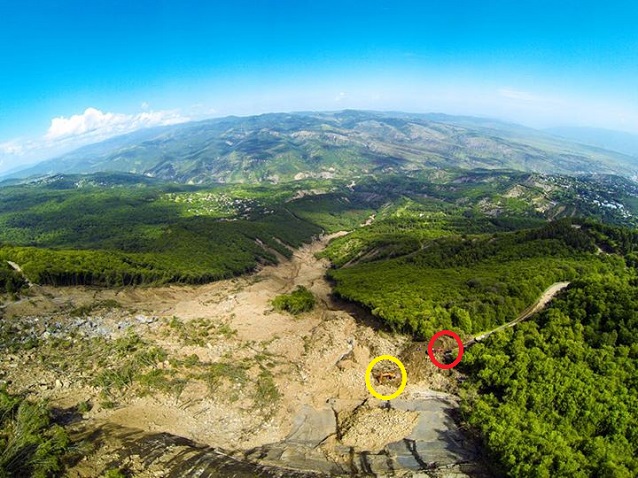Environment Minister: New landslide poses no threat to Akhaldaba residents

Twenty four hours on from the new landslide that hit Tskneti-Akhaldaba road, the small settlement of Akhaldaba is now safe, says Georgia’s Environment Minister.
Before dawn yesterday about 200 cubic metres of land came crashing down onto Tskneti-Akhaldaba road near Akhaldaba village, which lies about 10 kilometres above Georgia’s capital city Tbilisi.
Today Minister Gigla Agulashvili said safety measures had been taken immediately after the initial landslide on June 13; specifically five houses in Akhaldaba and three families in Tskneti were identified as living in the danger zone and these inhabitants were subsequently evacuated shortly after.
Yesterday’s landslide was not big. But we know that this area is prone to landslides as the hillsides are very weak [and] a landslide may hit the area anytime. We are continuing to work to avoid any damage whether it is human or material,” said Agulashvili.
The Minister claimed the resettlement process to move people out of the disaster zone had begun long before yesterday’s slip and the process continued today. He said every family who lived in a danger zone would be told to leave their settlement and move to a safer place.

The initial landslide over Tbilisi on Tsketi - Betania hillside clearly shows the scale of the disaster. Facebook user Irakli Supernobody took these photo on June 17 by drone then uploaded them on Facebook. In the photo captions he said: "you cannot imagine the scale of the landslide” and tagged tractors and trucks in the images, which Agenda.ge has circled in yellow and red respectively. Photo /Facebook/Irakli Supernobody.
In a special statement yesterday the Ministry said no one was injured in yesterday morning’s landslide and no houses were damaged. However the Tskneti-Akhaldaba road was badly damaged and blocked and a previously restored pipeline that supplied Akhaldaba village was also damaged, so now the village did not have access to gas.
About 180 people live in Akhaldaba and they all rely on nearby Tskineti for basic food and supplies.
On June 28 world-leading specialist in environmental hazards and risk management, Italian geologist Claudio Margottini, inspected the territory after the initial landslide and noted the situation was "rather difficult” and future landslides could be repeated if heavy rainfall began again.
At the heart of the disaster: How did small Vere River become a raging force?
Georgia’s Ministry of Environment Protection created a video two days after the June 13 terrible disaster, which showed a reconstruction of the events of the tragic night.
After heavy rain and hail, which started around 10pm and continued for several hours, the landslide carrying one million cubic metres of land and mud careered down the hillside and into the Vere River valley, near Akhaldaba village, about 20km from the capital Tbilisi.
The mudflow flooded the riverbed, causing a natural dam to form. Soon after the water level quickly rose and the water mass broke the dam, sending a huge torrent of water crashing towards Tbilisi.
Experts observing the situation and the disaster zone said another landslide could repeat if more rain lashed down on the unsteady territory however any future landslides would be on a much smaller scale.
Watch the video with the English subtitles below:
 Tweet
Tweet  Share
Share